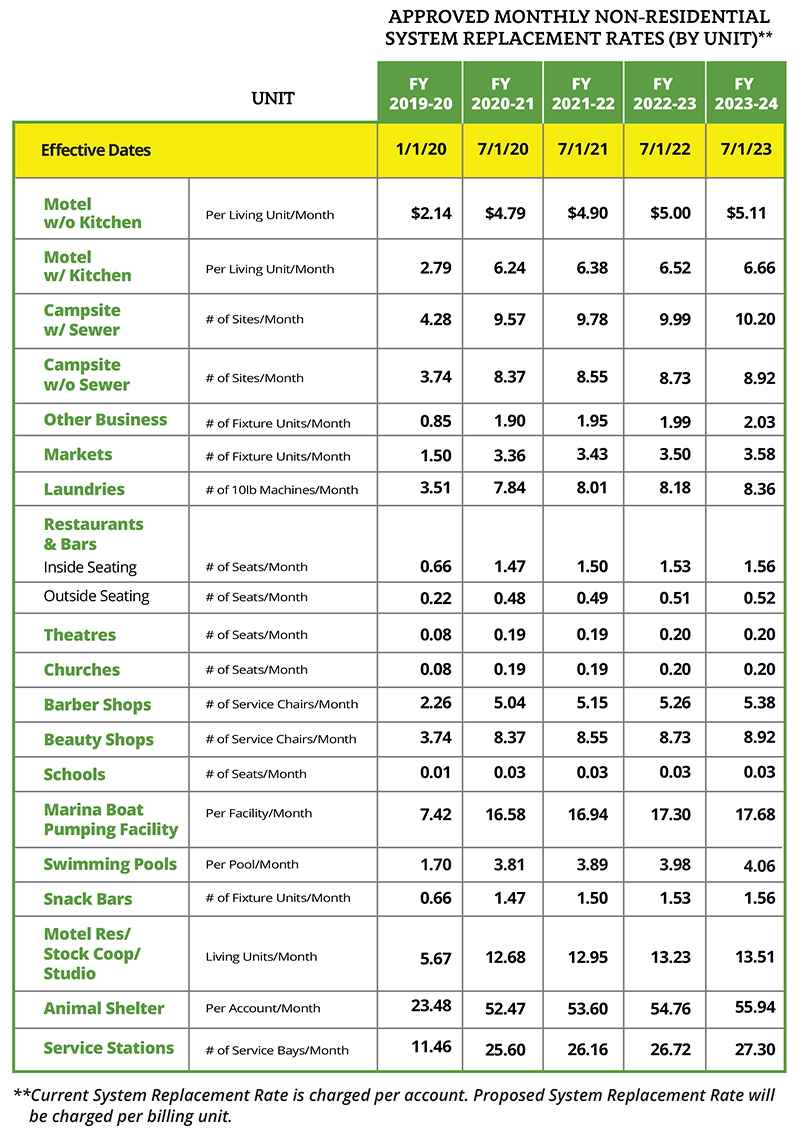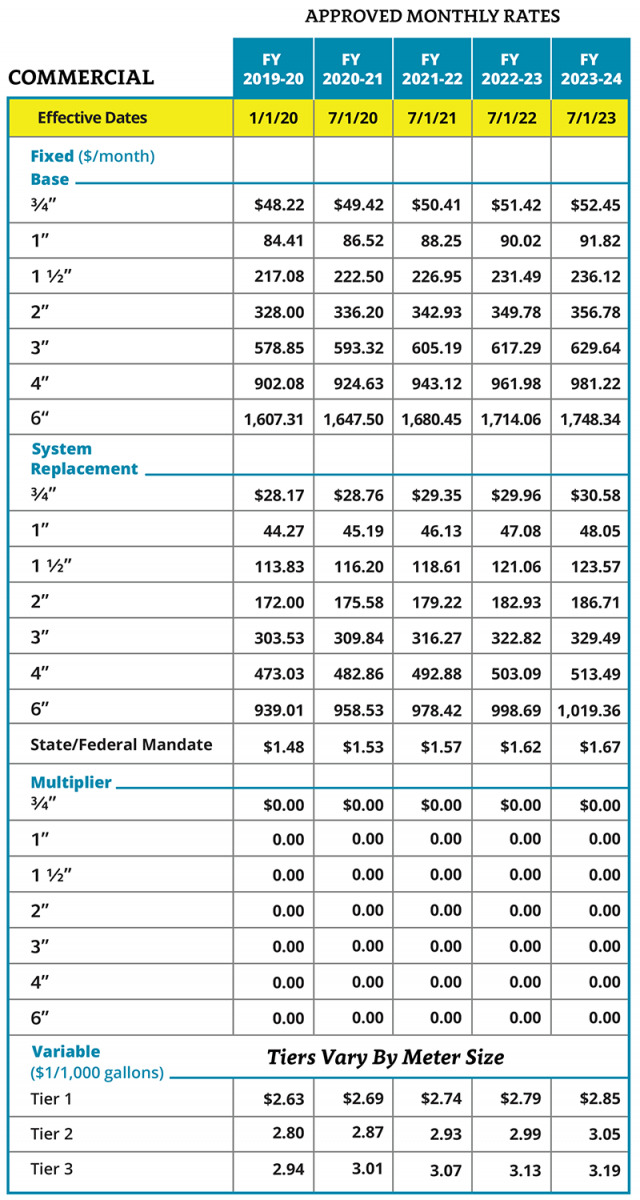NTPUD Five-Year Rate Structure
At the November 12, 2019 Board of Directors meeting the new Water and Sewer Ordinances, including new rates, were adopted.
In 2018, the District undertook a comprehensive cost-of-service study to determine whether our utility rates were sufficient to meet system rehabilitation and replacement needs, as well as the District’s sewer and water operational costs. The study also assessed our utility rates for compliance with industry best practices and California state law. At a public hearing on November 12, 2019 and in compliance with California Proposition 218 (Cal. Const. Article XIIID, sec. 6), the NTPUD Board of Directors adopted a new five-year rate structure developed from the findings of this study. The new Ordinances went into effect on December 12, 2019 and the water/sewer rates went into effect on January 1, 2020.
The new five-year rate structure funds significant reinvestment in the District’s aging sewer and water systems to ensure infrastructure rehabilitation and replacement occurs before we begin to see significant failures. During this five-year rate adjustment period, the District’s rates remain among the lowest of sewer and water service providers in the region.
New sewer and water rates will become effective July 1, 2023.
Five-Year Prop 218 Customer Notification
The District
The North Tahoe Public Utility District (District) was formed in 1948 to provide sewer services to Lake Tahoe north shore residents. In 1967, water services were added to the District’s responsibility. The District currently serves approximately 5,500 sewer connections and 3,900 metered water connections.
Sewer System
The District’s sewer system consists of over 73-miles of collection main pipeline and 7.5-miles of force main pipeline from Secline Avenue to Dollar Hill, with four primary and 16 secondary pump stations.
Water System
The District’s water system contains over 53-miles of water distribution pipelines, five pump stations, eight water storage reservoirs, the National Avenue Water Treatment Plant, two groundwater wells, and one inter-tie with the Tahoe City Public Utility District.

Growing to Meet Our Community’s Needs
Much of the District’s system was originally built to serve summer seasonal cabins. Over the years, we have invested in system expansion and improvements to grow with our community, meet increasing regulatory requirements, and ensure public health, safety, and the protection of our unique Lake Tahoe environment. Additionally, we have invested in expanding our water system to ensure adequate storage and capacity to provide reliable flows for modern fire protection.
Planning for the Future
The average age of infrastructure is approaching 50 years old, and despite continuous maintenance and system investment, much of the infrastructure is approaching the end of its service life. There is also significant investment necessary to expand fire flow coverage within our service area.
Recognizing the approaching end of service life, we launched a comprehensive condition assessment effort in 2015. This included video inspection of all 73-miles of sewer collection main pipelines and leak detection across 53-miles of water distribution pipelines, as well as physical inspection and assessment of our sewer and water pump stations, water storage reservoirs, groundwater wells, and water treatment plant. In 2017, a comprehensive Capital Improvement Plan (CIP) was developed that identifies over $51-million in necessary system rehabilitation and replacement over the next 20-years with $18.5-million identified in the next five years. This is nearly triple the District’s historical annual infrastructure investment level.
Investing in Our Infrastructure
To ensure the sewer and water systems continue to function properly and reliably now and into the future, our five-year CIP identifies many upgrade and replacement projects for:
- Sewer collection main pipelines, force main pipelines, and pump stations
- Water distribution pipelines and storage reservoirs
- Heavy equipment and vehicles
District Rate Assessment
In 2018, we retained an independent rate consultant and began a comprehensive cost-of-service study to determine whether existing rates and property tax revenues were sufficient to meet the system rehabilitation and replacement needs, as well as the District’s operational costs for the water and sewer systems. Our rate structure was also assessed for compliance with industry best practices and California state law. California Proposition 218 (Cal. Const. Article XIIID, sec. 6) requires each customer class be charged only what is required to cover their respective proportional cost of service. Importantly, sewer rates can only be used to fund sewer system costs, and water rates only to fund the water system costs.
With the study now complete, we have determined annual rate increases are necessary over the next five years in order to continue providing reliable and sustainable sewer and water services into the future. Existing rates and property tax revenues are not sufficient to fund necessary investments in our infrastructure and meet operational costs.
The proposed increases to monthly sewer and water rates are triggered by many factors including:
- Identified infrastructure improvements necessary to address end of service life system rehabilitation and replacement
- Significant escalation of the cost of construction
- Inflationary increases in supply, material, labor, and utility costs
Additionally, we identified necessary rate restructuring to ensure continued compliance with Proposition 218. As a result of this rate restructuring, the bill impact of the proposed rate increases will not be the same across all customer classes, and some water customer classes will see a decrease from their current water bill.
The last major rate increase was approved by the District’s Board of Directors on October 16, 2007, and the District has worked hard over the last decade to maintain stable and affordable rates. However, we must move forward with necessary infrastructure rehabilitation and replacement before our sewer and water system begins to see significant failures. Even with the proposed adjustments, over the next five-year rate period, the District’s rates will remain among the lowest of sewer and water service providers in the region.
















